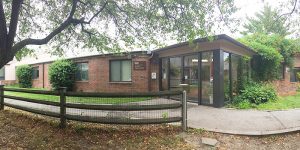Author: Mathieu Girard
Almost 1000 years ago, Normandy invaded England, demanding a census that would improve colonial organization and administration. At this point, only scribes and administrators possessed the ability to read and write, and thus, they held the power to record and share information. In order to participate in the community and share ideas, people realized that they also needed to read and write. In essence, as the number of people who were literate increased, so did the need to be literate. While it seems that literacy is simply defined as the ability to read and write, University of Pittsburgh professor Annette Vee notes that this ignores social and historical context, and literacy should instead be defined as “a human facility with symbolic and infrastructural technology that can be used for creative, communicative and rhetorical purposes”. As such, the textual writing system is simply a technology – a mode for literacy, but not the only one. Meanwhile, whether or not a set of communicative skills can be considered a literacy depends on social context, and how central to life that technology is.
Back in 1086 when the Normans invaded England, there were no computers – everything had to be recorded through writing. Humans then interpreted this writing and made decisions. In our society today, decisions are not simply based on the interpretation of written words. Evidence used to inform decisions comes from computer-based programs and algorithms, created through computational code. To name a few examples, we base our health policy on predictions generated by computational models, we have programs that can predict the likelihood that a defendant is guilty during a trial, and we even have algorithms that can determine someone’s identity using visual data. Put simply, computer programs pervade our lives. In order to manipulate computer programs and thereby understand the world around us, everyone must possess some knowledge of code. For this reason, coding is the technology for computational literacy, empowering those who can use it to think freely and express themselves. The computationally literate have already begun to take advantage of the computationally illiterate, as seen through data selling and phishing scams. Computational literacy grants people the ability to maintain control over their own lives, as well as participate in civic matters.
Before learning more about computational literacy in the Spring class taught by Prof. Marina Bers, Technological Tools for Playful Learning, I assumed that coding simply taught more about problem solving. I neglected to think about a key way by which coding resembles writing – the ultimate goal of both is expression. American monk Walter J. Ong noted that “articulated truth has no permanence,” meaning that simply speaking a thought does not effectively communicate that message to anyone who is not present for the event during which the thought is spoken. In order to convey that message to a wider audience, it must be recorded. Writing has historically served as the instrument for recording. Ong further stated that writing separates the known from the knower, and a being from time. It is now clear to me that these functions are also completed by code. In class, we taught coding with young children at the Eliot-Pearson Children’s School Through code, and we discovered that children (and people of all ages) can build a program or project that reflects their internal processes, facilitating the expression of some type of message. This program or project can be shared with anyone, providing a medium for separating the known from the knower, and the being from time. One’s thoughts, expressed through code, can exist for much longer than an articulated thought. Coding facilitates communication and is central to the world in which we live, clearly constituting a literacy.


 ABOUT
ABOUT